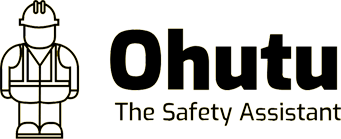Many people who work in construction or endeavour to take on construction projects hear the term CDM 2015. However many people do not know what it means, or understand the implications of not complying with it. CDM 2015 is a set of regulations created by the HSE to make Health & Safety planning and management a part of every construction project in the UK.
In short, CDM 2015 is a set of rules created to improve health and safety in the construction industry. Construction is one of the most dangerous industries. If health and safety is not properly taken care of, injuries and fatalities will almost certainly ensue.
Which projects need to comply?
Every single construction project needs to comply with CDM 2015. It was created specifically to tackle the smaller building jobs where the majority of accidents occur – not just bigger jobs, like some people believe. 75% of all accidents occur on the small building site. Complying with CDM 2015 will keep you, your business and your people on site safe. Failure to comply with CDM 2015 can have dire consequences that could very well mean the end of your business, or worse.
Whatever your role in construction may be, CDM aims to improve health and safety in the industry by helping you to:
- Plan the work sensibly so the risks involved are managed and minimised from start to finish
- Have the right people available for the right job at the right time
- Cooperate and coordinate your work with others to ensure the project runs smoothly and safely
- Have the right information about the risks and how they are being managed
- Communicate this information effectively to those who need to know
- Consult and engage with workers about the risks and how they are being managed
What are the risks of non-compliance?
If you fail to comply with CDM 2015 it can generate penalties of up to 7 figures, and directors may even be sent to jail. The HSE can quite literally come down on you like a ton of bricks. Construction is one of the most dangerous professions out there, and keeping people on site and around site safe is so important.
Doing nothing and hoping for the best is simply not an option anymore. It’s your job as the builder, as the HSE says, to ‘Plan, manage and monitor construction work under your control so it is carried out without risks to health and safety’, including the creation of a Construction Phase Plan. Failure to comply with requirements under CDM 2015 will remain a criminal offence punishable with unlimited fines and, for individuals, imprisonment. Ignoring CDM 2015, or failure to comply with the set of regulations to the letter, is a dangerous risk that nobody in construction should be willing to take.
Even if you believe the job you are doing is only very small, you still need to comply with CDM 2015. Anybody engaged in any kind of construction project at all must comply. This covers things like repairs, installations, and refurbishments. Projects both large and small, from start to finish, commercial or domestic, contracted directly or subcontracted by another. It doesn’t matter whether you are fitting a kitchen or taking on a loft conversion. You must comply with CDM 15.
CDM regulations apply to every construction project and there are absolutely no exceptions. Even projects that you may not initially consider to be construction work, such as maintenance activities, need to comply with CDM 15. It won’t matter how long or short the duration of the work is, either. There are no shortcuts or loopholes unfortunately. So getting to grips with CDM 2015 now is the only way you will be able to legally and safely carry out your construction project.
What are the definitions of ‘construction’?
It’s important to note that the term ‘construction project’ is far reaching. Looking at the definition of construction work under CDM covers every type of construction activity you could think of. It includes the following:
- Preparation for a structure
- Site clearance and groundworks
- Alteration
- Conversion
- Fitting out
- Commissioning
- Renovation
- Repair
- Upkeep
- Redecoration and other maintenance
- Installation of services
- Demolition and dismantling of a structure
It has become quite clear over recent years that the understanding of CDM 2015 is far below the level that it should be. Many people have a lack of understanding of the new terminology brought in by the 2015 regulations. Everyone who has read the legislation or attended a training session should understand Pre-Construction Information (PCI) or Construction Phase Plans (CPP).
What you need to do
To comply with CDM 2015, you must create a Construction Phase Plan and you need to organise the work. You also must make sure that the appropriate health and safety procedures are in place. If you’re the only business working on the project, you’ll be taking on more than one role. On a larger project, you will split up these roles.
This can sound daunting, but by using Ohutu, you can get a Construction Phase Plan in under 5 minutes. This ticks the Planning part quickly and efficiently with no need to panic about wasting valuable time.
Our companion mobile app provides the ability to manage and monitor the construction work as the job progresses. This tackles the other 2 parts too. It makes complying with CDM 2015 very simple and takes away any niggling thoughts and feelings that you may be missing something as you carry out the construction project.
It can certainly take a while to understand CDM 2015 fully and make sure you are complying with it, which is why the Ohutu app is so useful. Ohutu exists to take the headache out of creating your CPP. Adding in the details of your project will generate the CPP for you. It really is that easy.
The best thing about using Ohutu? There’s absolutely no risk in giving it a go, because using it for your first project won’t cost you a thing. Try it today and you’ll see how it makes complying with CDM 2015 so much easier.


